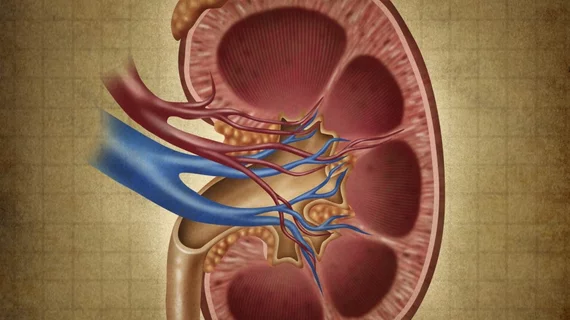Arterial spin labeling MRI explains cognitive dysfunction in young kidney disease patients
Arterial spin labeling MRI may offer a noninvasive alternative for quantifying cerebral blood flow without the use of contrast agents—a necessity for patients with illnesses like kidney disease, researchers wrote in a Radiology study this June.
Research led by John A. Detre, MD, found arterial spin labeling to be an effective method for evaluating blood flow in the brains of children, adolescents and young adults with chronic kidney disease, according to the paper. The work aimed to assess cognitive function in the pediatric demographic and allow insight into why so many kidney disease patients face cognitive impairment.
Detre, a professor of neurology and radiology at the Center of Functional Neuroimaging in Radiology and vice chair for research in neurology at the Perelman School of Medicine in Philadelphia, said researchers haven’t been sure if brain problems induced by kidney disease in adults are secondary to the hypertension it breeds.
“In our study, we wanted to look at patients with early kidney disease, before they’ve experienced decades of high blood pressure,” he told the Radiological Society of North America. “In doing this, we could separate the kidney disease effects from those of chronic high blood pressure.”
To do this, Detre and his colleagues analyzed arterial spin labeling data from 73 pediatric kidney disease patients under 16 years old and 57 healthy controls.
Children with kidney disease showed higher levels of cerebral blood flow compared with their counterparts, especially in the default-mode network—a finding Detre attributed to either hyperactivity in the brain or disturbance in the regulation of blood flow. White matter cerebral blood flow and blood pressure were also linked, he said, which could be a red flag for white matter injuries down the road.
“Chronic kidney disease appears to affect brain physiology and function even early in the disease,” Detre said. “This study gives us clues about what changes in the brain physiology might underlie cognitive changes. The technique provides a noninvasive way of quantifying cerebral blood flow that doesn’t require use of contrast agent, which is contraindicated in patients with kidney dysfunction.”

